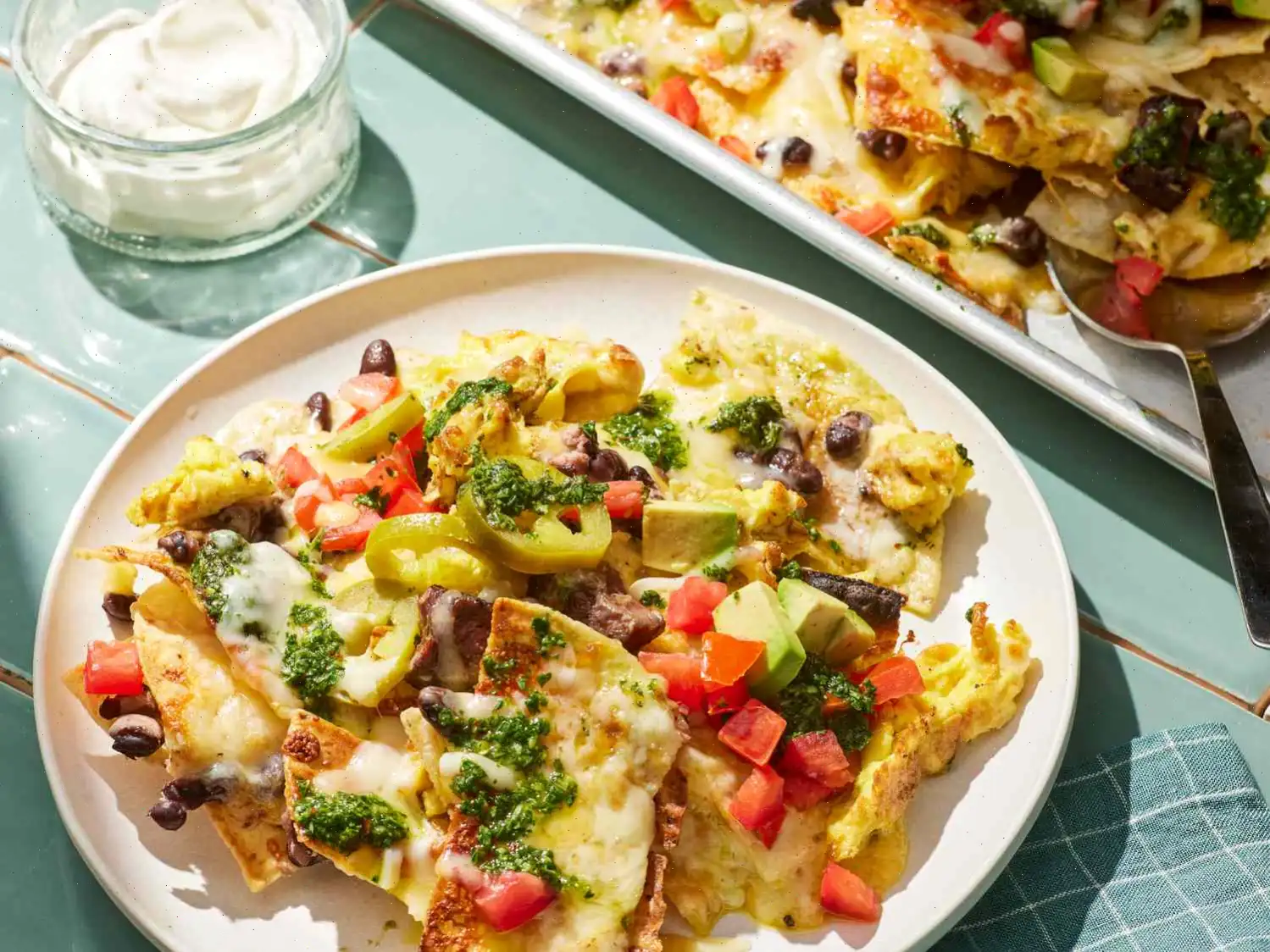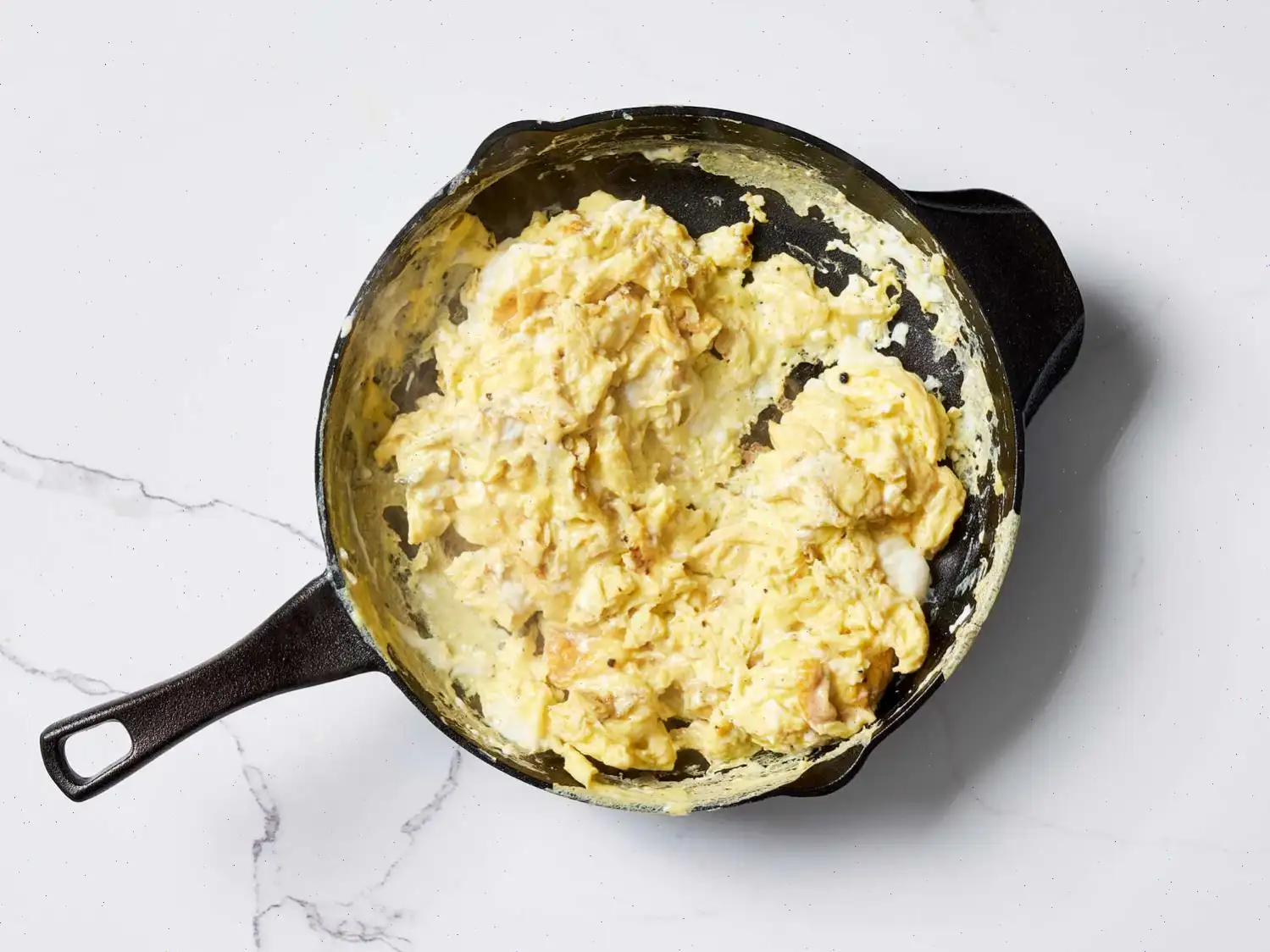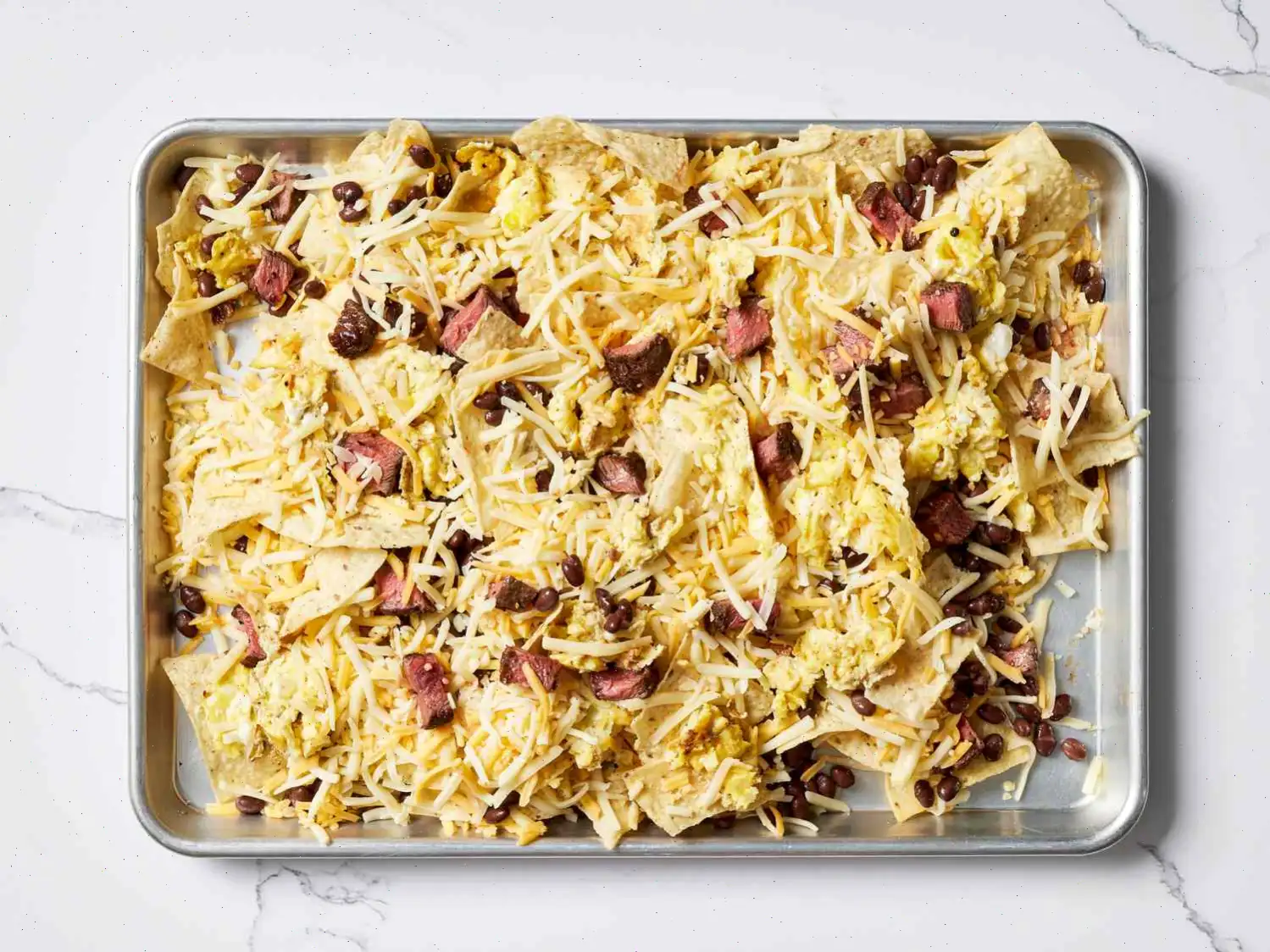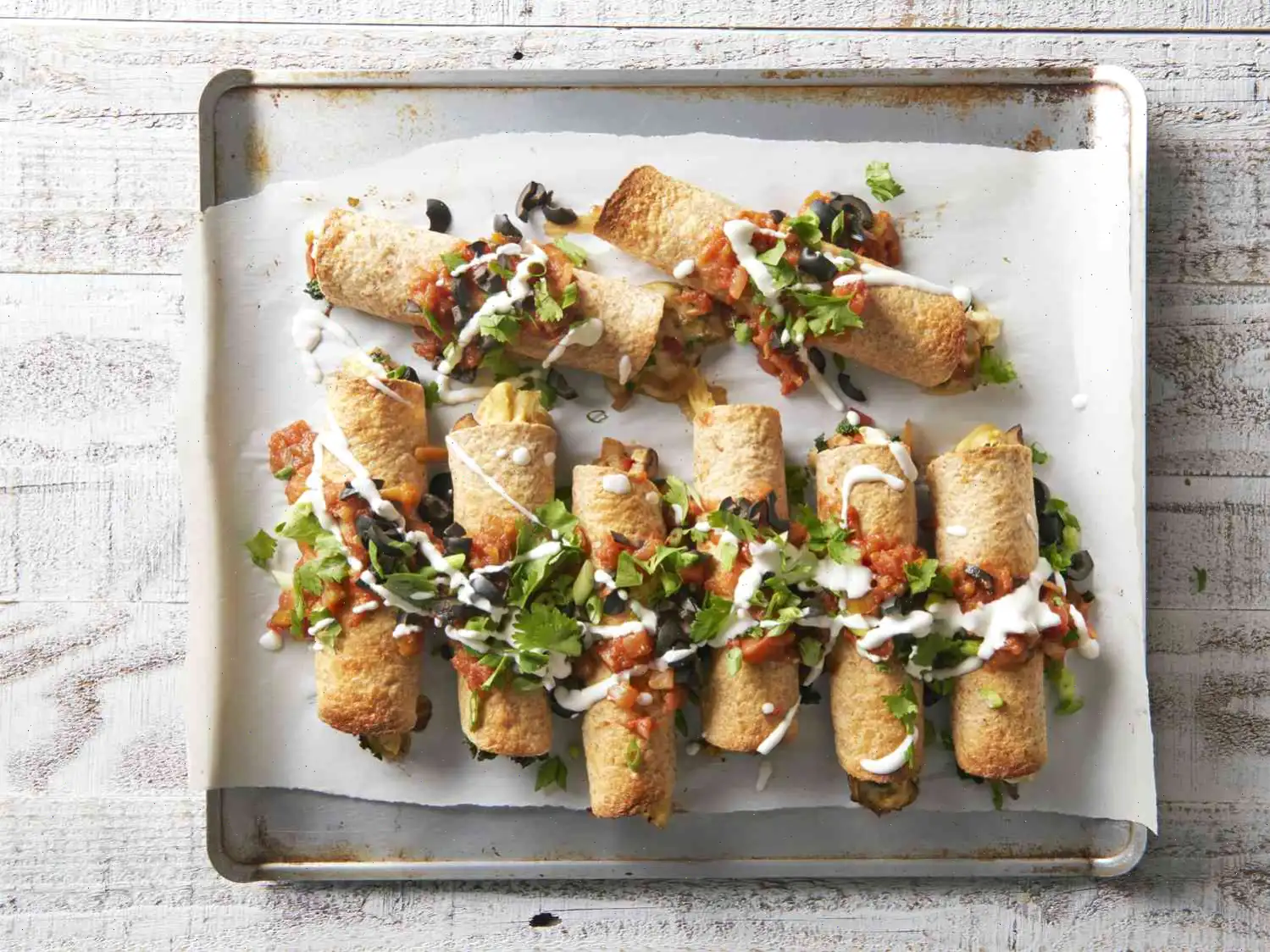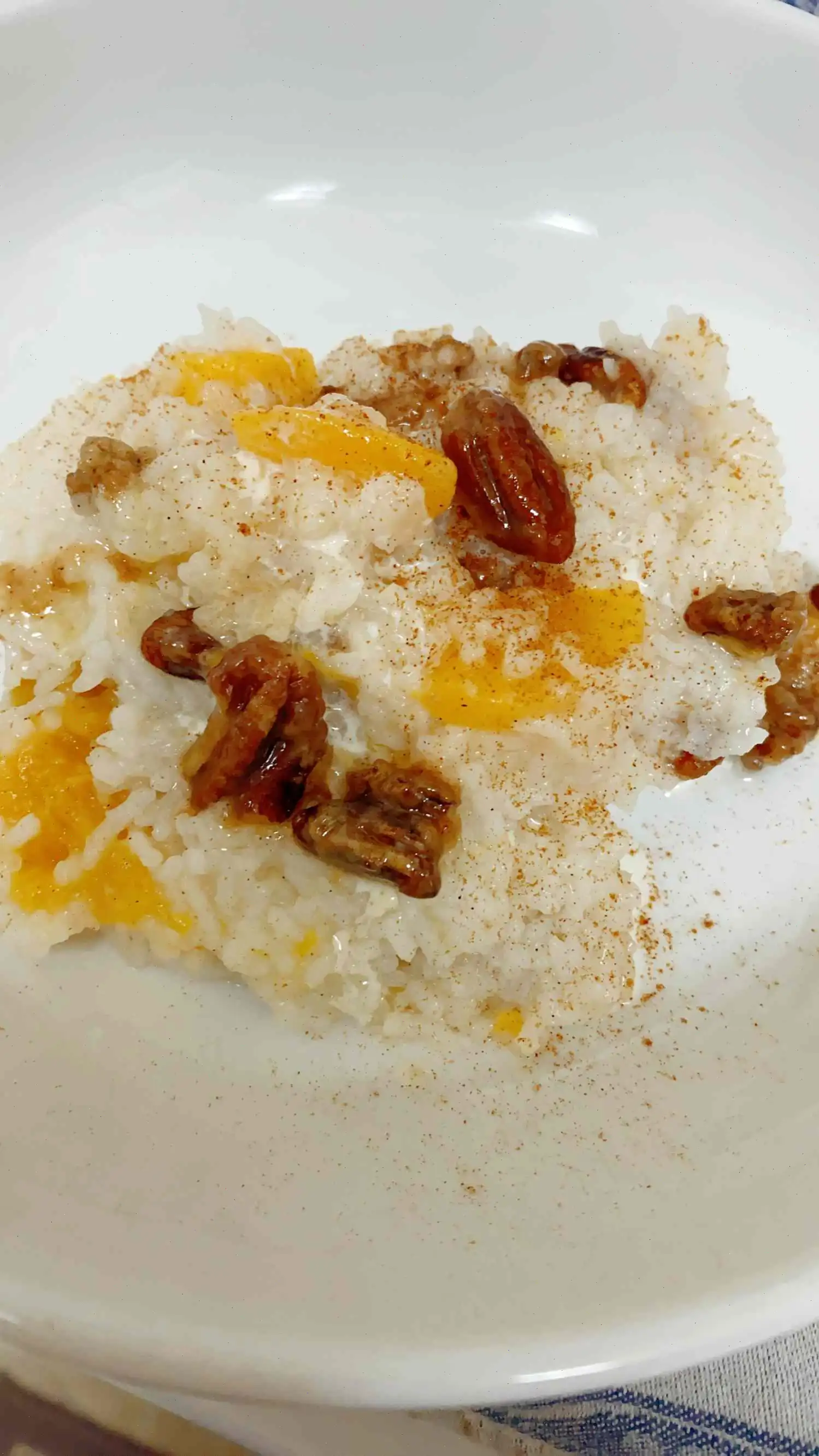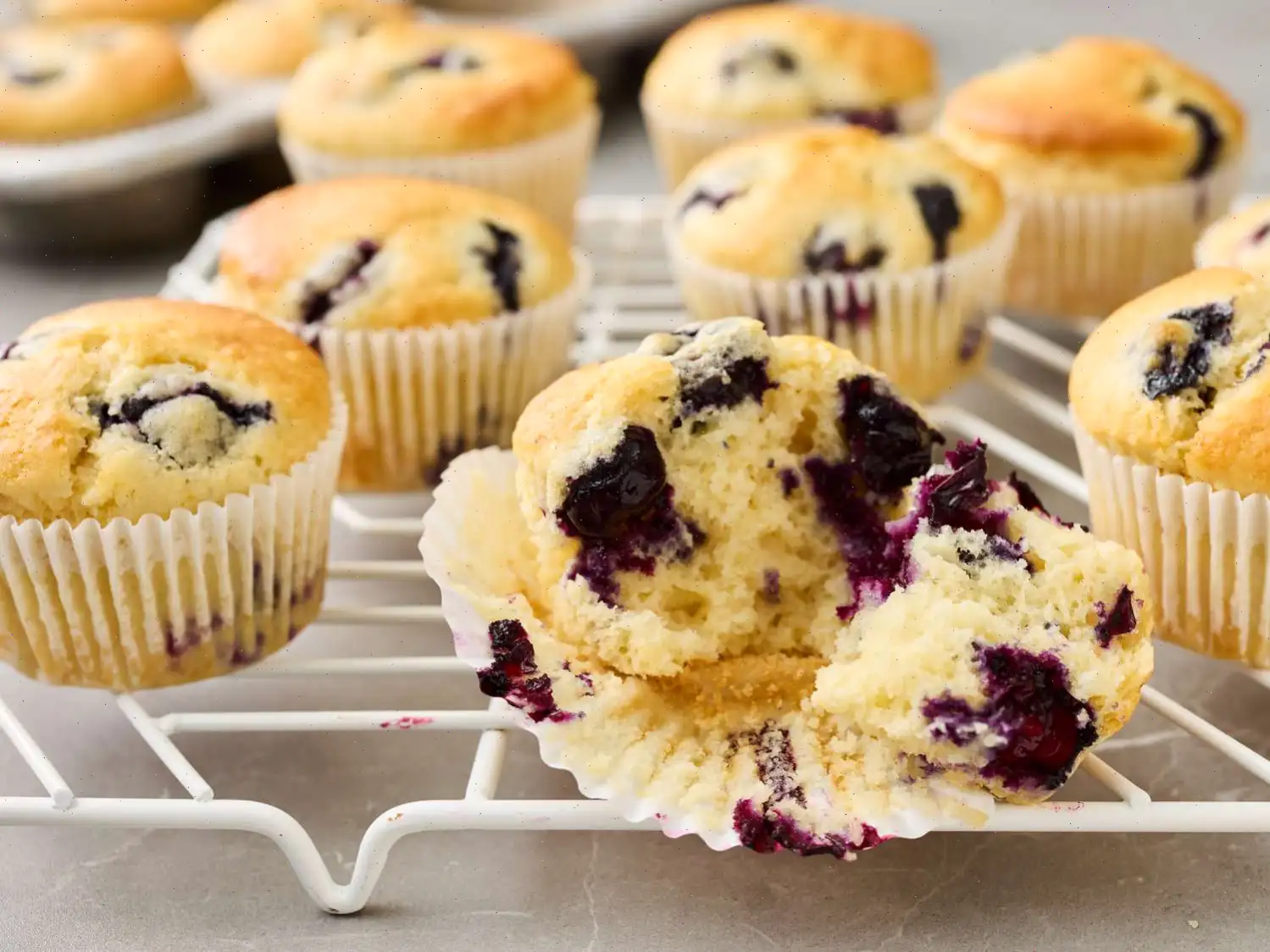
Breakfast Nachos Recipe
Ingredients
- Chimichurri:
- 3/4 cup packed fresh cilantro leaves and tender stems
- 1/2 cup loosely packed fresh flat-leaf parsley leaves and tender stems
- 1 clove garlic, coarsely chopped
- 1 1/2 tablespoons red wine vinegar
- 1/4 teaspoon crushed red pepper
- 1/4 teaspoon kosher salt
- 1/4 cup extra-virgin olive oil
- Nachos:
- 1 (8 ounce) flat iron steak, patted dry
- 3/4 teaspoon kosher salt, divided
- 1/2 teaspoon ground black pepper, divided
- 1/2 teaspoon ground cumin (optional)
- 2 tablespoons olive oil
- 8 large eggs
- 1 (11 ounce) package tortilla chips (such as Tostitos)
- 2 (8 ounce) packages shredded Mexican cheese blend (such as Tilamook)
- 1 (15 ounce) can black beans, drained and rinsed
- 1 cup chopped plum tomatoes
- 1 avocado, chopped
- 1/2 cup drained pickled jalapeno slices
- 1/2 cup sour cream, or as needed
Directions
- Start by gathering all of your ingredients to ensure a smooth cooking process.
- For the Chimichurri:
- Place the cilantro, parsley, garlic, red wine vinegar, crushed red pepper, and kosher salt in a small food processor. Pulse the mixture about 10 times until finely chopped.
- With the processor running, slowly pour in the olive oil and blend for another 20 seconds until fully combined. Set the chimichurri aside.
- For the Steak:
- Season the steak evenly with 1/2 teaspoon of salt, 1/4 teaspoon of black pepper, and cumin if desired.
- Heat a medium cast-iron skillet over medium-high heat for 5 minutes. Add the steak and 1 tablespoon of olive oil, swirling the pan to ensure the oil is evenly distributed.
- Cook the steak undisturbed for about 3 minutes per side, or until a thermometer inserted into the thickest part of the steak registers 120F (49C) for rare. Once cooked, transfer the steak to a cutting board and let it rest for 10 minutes.
- Do not clean the skillet after removing the steak, as it will be used again for the eggs.
- For the Eggs:
- Whisk together the remaining 1/4 teaspoon of salt and black pepper with the eggs in a medium bowl until fully combined.
- Heat the same cast-iron skillet over medium heat. Add the remaining tablespoon of olive oil, then pour in the eggs. Stir occasionally until the eggs are just set, about 2 minutes. Transfer the scrambled eggs to a bowl, cover, and set aside.
- For Assembling the Nachos:
- Preheat the ovens broiler and place a rack about 12 inches from the heat source. Line a large rimmed baking sheet with aluminum foil.
- Arrange half of the tortilla chips evenly on the prepared baking sheet.
- Thinly slice the rested steak across the grain and cut it into 3/4-inch pieces. Layer the chips with half of the steak, half of the black beans, half of the scrambled eggs, and half of the shredded Mexican cheese blend.
- Repeat the layering with the remaining chips, steak, beans, eggs, and cheese.
- Broil the nachos for about 2 minutes, or until the cheese is melted and bubbly.
- Final Touches:
- Once the nachos are broiled, remove them from the oven and top with chopped tomatoes, avocado, and pickled jalapeos.
- Drizzle the chimichurri sauce evenly over the nachos, then serve with sour cream on the side.
Nutrition Information (per serving)
- Calories: 738
- Total Fat: 51g (65% Daily Value)
- Saturated Fat: 17g (84% Daily Value)
- Cholesterol: 257mg (86% Daily Value)
- Sodium: 898mg (39% Daily Value)
- Total Carbohydrate: 43g (16% Daily Value)
- Dietary Fiber: 10g (35% Daily Value)
- Total Sugars: 3g
- Protein: 30g (60% Daily Value)
- Vitamin C: 16mg (17% Daily Value)
- Calcium: 494mg (38% Daily Value)
- Iron: 4mg (22% Daily Value)
- Potassium: 745mg (16% Daily Value)
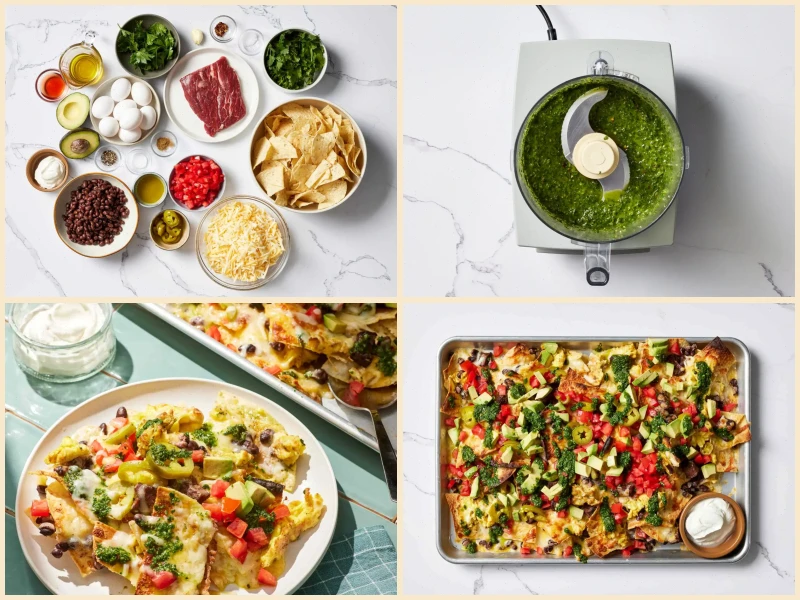
History of Breakfast Nachos
Breakfast nachos emerged as an inventive twist on the classic Mexican bar snack that gained popularity in the United States in the mid-20th century. While traditional nachos trace their origins to the border town of Piedras Negras, the breakfast version evolved much later as chefs experimented with merging morning staples like eggs and steak with the beloved tortilla-chip base. This hybrid dish reflects the growing trend of transforming comfort foods into full, hearty meals suitable for any time of day.
Regional Variations
Across the U.S., breakfast nachos adapt to local tastes. In the Southwest, they often incorporate roasted chiles, chorizo, or smoky salsa verde. In California, avocado and fresh herbs dominate, bringing a lighter, more vibrant profile. Some regions emphasize spice, layering jalapeos and pepper jack cheese, while others favor Tex-Mex influences such as refried beans and creamy queso. These variations highlight the dishs versatility and its ability to reflect regional culinary identities.
Differences from Similar Dishes
Although breakfast nachos share similarities with breakfast tacos and chilaquiles, they stand apart in structure and intention. Unlike chilaquiles, where tortilla chips soften in sauce, breakfast nachos maintain their crisp texture under broiled cheese and toppings. Compared with tacos or burritos, nachos invite a more communal, shareable experience, arranged on a large platter rather than individually portioned. The use of layered chips as the foundation also creates a distinct balance of crunch, protein, and fresh garnishes.
Where Breakfast Nachos Are Typically Served
Breakfast nachos frequently appear on brunch menus in modern cafs, gastropubs, and fusion-style restaurants. They are also popular in food trucks that specialize in Mexican-inspired breakfast fare. At home, the dish is commonly prepared for weekend gatherings, game-day mornings, or casual brunches due to its simple assembly and crowd-pleasing nature. Its flexibility makes it equally suited for leisurely dining or festive group occasions.
Interesting Facts
One fun detail about breakfast nachos is their reputation as the ultimate morning share plate, often replacing classic breakfast platters at trendy eateries. Their growing popularity is partly driven by social media, where colorful garnishes like chimichurri, avocado, and tomatoes create visually striking presentations. Another interesting point is that chefs often use leftover steak or roasted vegetables to build the dish, making it both practical and sustainable. Despite its playful nature, breakfast nachos continue to evolve, inspiring countless creative interpretations worldwide.
You can listen to this recipe in AI audio format. Simply click the play button below to listen to the content in a format that suits you best. It’s a great way to absorb information on the go!
FAQ about Breakfast Nachos Recipe
Comments
Amy Cruz
08/27/2024 05:07:20 PM
Honestly, this blew my mind.




